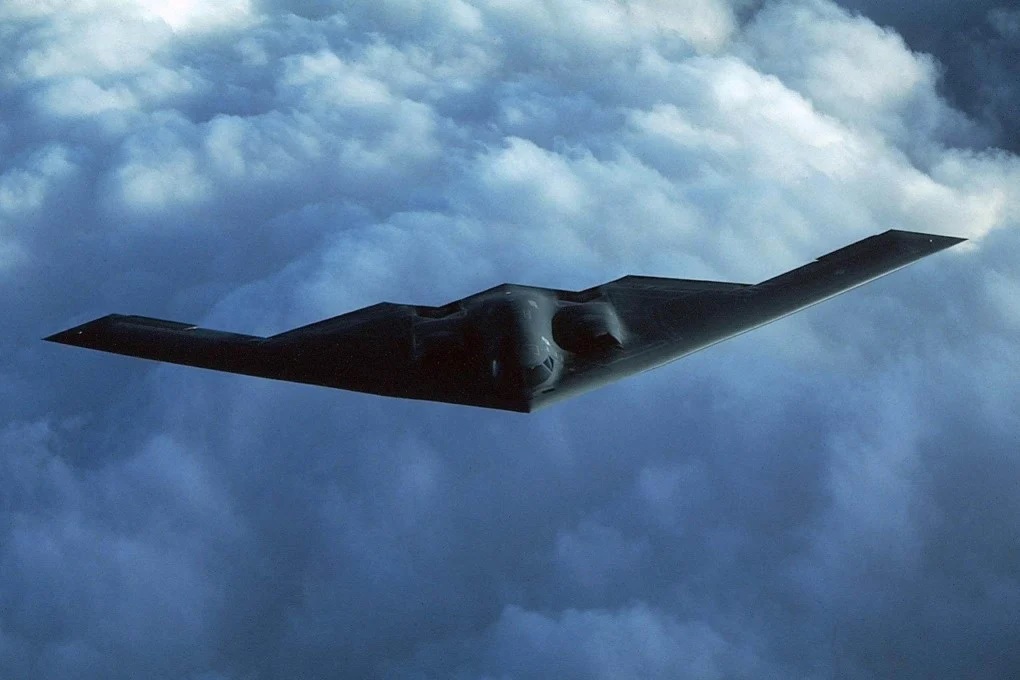U.S. Deploys B-2 Stealth Bombers to Target Houthi Rebels’ Underground Bunkers in Yemen

The recent deployment of U.S. B-2 Spirit stealth bombers to strike underground bunkers used by Yemen's Houthi rebels marks a significant escalation in military action in the region. The operation highlights America's commitment to countering threats in the Red Sea, where Houthi forces have increasingly targeted shipping lanes amidst broader Middle East tensions. The use of B-2 bombers in this mission demonstrates the U.S.'s capacity to engage hardened or deeply buried targets that adversaries consider out of reach.
Strategic Significance of the Strike
The strike comes amid escalating tensions in the Red Sea, a crucial waterway that sees substantial global trade, including the transit of oil. The Houthis, a Yemeni rebel group aligned with Iran, have carried out numerous attacks on merchant vessels since the outbreak of war in Gaza last October. More than 80 ships have been targeted, resulting in significant disruption to maritime activity. The attacks have included the use of drones and missiles, and some incidents led to vessel seizures or sinkings, claiming the lives of at least four sailors. The Houthis have claimed that their operations aim to challenge nations they perceive as supporting Israel's actions in Gaza, such as the U.S., the U.K., and their allies.
The U.S. has long maintained a strong presence in the region to ensure the security of vital shipping routes. In this context, the deployment of the B-2 bomber was a clear message of the U.S.'s ability to neutralize fortified positions that threaten international stability.
Capabilities of the B-2 Stealth Bomber
The B-2 Spirit is a long-range, heavy-penetration bomber capable of delivering conventional and nuclear munitions. What makes the B-2 unique is its stealth technology, which allows it to evade radar detection, making it ideal for missions deep in hostile territory. It can carry bunker-busting bombs, which are specifically designed to penetrate hardened underground facilities, such as those used by the Houthi rebels to store weapons, drones, and other military equipment.
With a range of approximately 6,000 nautical miles (11,112 km) without refueling and the ability to fly up to 50,000 feet (15,240 meters), the B-2 is a potent tool for precision strikes against strategically important and well-protected targets. Its payload includes the GBU-57A/B Massive Ordnance Penetrator (MOP), a 30,000-pound bomb capable of reaching depths of 200 feet (61 meters) of reinforced concrete.
Implications for the Red Sea Conflict
The deployment of B-2 bombers signals a new phase in U.S. military involvement in the region, beyond the traditional naval and aerial patrols that have sought to deter Houthi attacks. This move could alter the dynamics of the Red Sea conflict by disrupting the Houthis’ ability to maintain or use fortified underground facilities, which they consider safe from conventional airstrikes. The U.S.'s choice of advanced stealth bombers for this mission emphasizes its intent to target facilities previously regarded as untouchable due to their depth or fortification.
The strike follows a series of Houthi actions that have targeted Western military and merchant vessels, escalating tensions since Israel’s recent ground incursion into Lebanon and the killing of Hezbollah leader Hassan Nasrallah. The Houthis, who have also downed U.S. MQ-9 Reaper drones, have warned of further attacks in response to ongoing conflicts in the region.
Wider Impact on Regional Security
By targeting the Houthis’ underground bunkers, the U.S. aims to degrade their military capabilities and disrupt operations that threaten maritime security in one of the world's most important shipping lanes. The Red Sea, a passage that once saw $1 trillion in annual trade, has increasingly become a contested battlefield as various actors seek to influence outcomes in the broader Middle East.
While the immediate effects of the strike remain unassessed, the U.S.'s decision to use the B-2 stealth bomber underscores its commitment to leveraging superior military technology to address evolving threats. For the Houthis, it serves as a stark reminder of the risks associated with provoking a superpower and disrupting international trade. For other regional players, the strike reinforces the U.S.'s resolve to maintain the security of key maritime routes.
The conflict's trajectory may shift as the Houthis reassess their strategies, especially concerning further attacks on international shipping and military assets. With tensions still high, particularly in the aftermath of Israel’s military actions, the situation in the Red Sea could see additional escalations or a potential recalibration of Houthi tactics in response to U.S. deterrence efforts.


